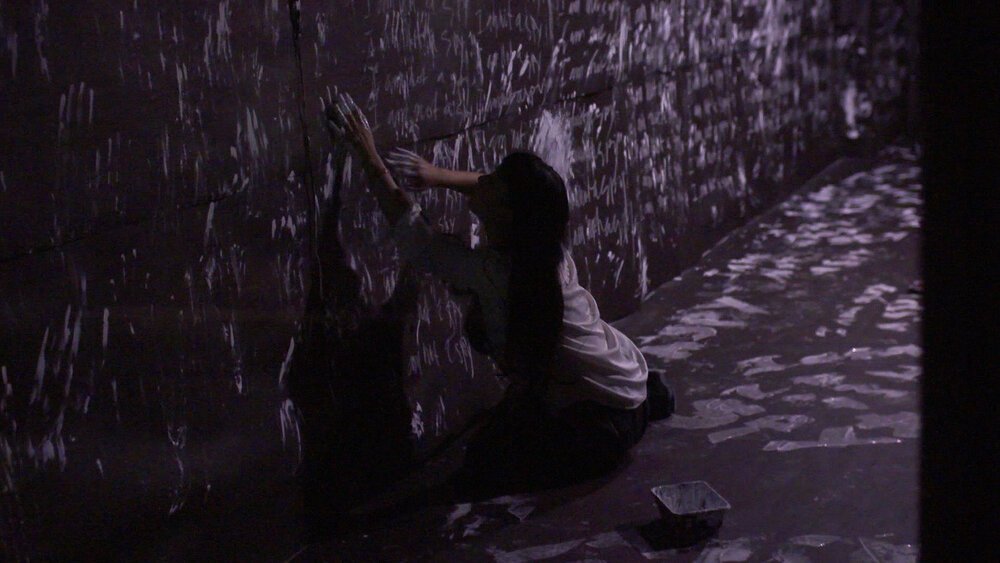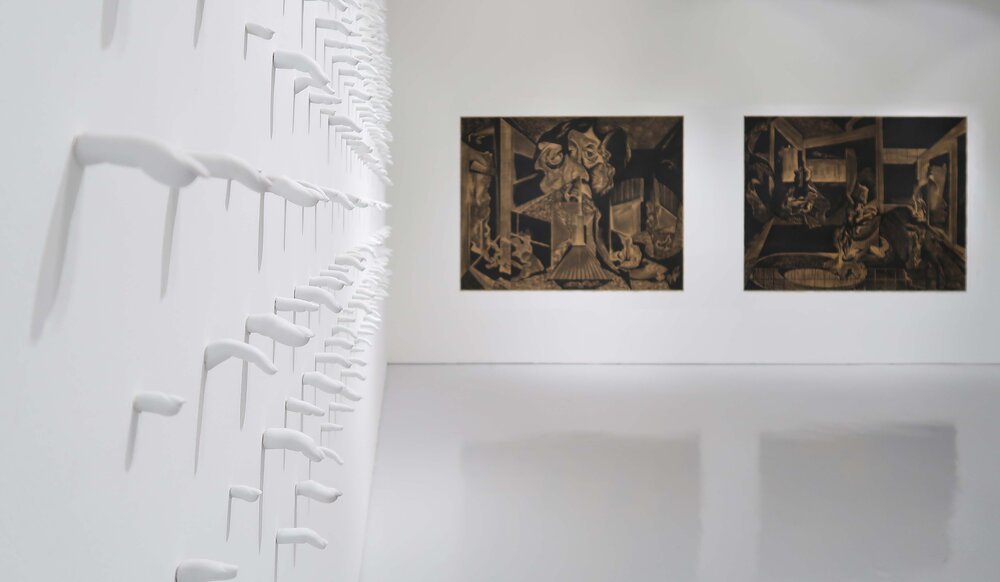Review of 'Unlearning' at RKFA
A glimpse of diverse voices in Vietnamese contemporary art
By Ian Tee
Cam Xanh, 'Declaration of Independence of Vietnam' (detail), 2015, marker on silkworm cocoons in plexiglass case, 50 x 10 x 10cm. Image courtesy of the artist and Richard Koh Fine Art.
The process of unlearning entails breaking down the origins of old biases and undoing the effect of certain knowledge or habits. Rather than forgetting, it is about choosing an alternative paradigm. In this spirit, Richard Koh Fine Art's (RKFA) latest exhibition 'Unlearning' aims to challenge misconceptions about Vietnamese art by providing a glimpse into its diverse contemporary expressions. In his essay, curator David Willis asserts that just artists are "engaged in a constant process of self-education and unlearning with regards to what art can be or do, so must international observers unlearn preconceived notions about the art being made in Vietnam today." The seven artists featured are either currently or formerly based in Saigon.
While one might associate Vietnam with its rich tradition of silk painting, Cam Xanh's sculptural piece 'Declaration of Independence of Vietnam' engages with the material symbolically in its raw form of silkworm cocoons. The cocoons are marked with words from 'Nam quốc sơn hà' (Mountains and Rivers of the Southern Country), the tenth-century poem popularly considered Vietnam’s first declaration of independence. By breaking down the text into its component words and writing them in Chinese and Vietnamese, the artist looks past the poem's origins as a rallying cry against Song invaders to also examine how such speeches are used to incite war in the name of liberation, like how the silkworm is sacrificed for its silk.
Bao Vuong, 'The Crossing XI', 2019, oil on canvas, 120 x 200cm. Image courtesy of the artist and Richard Koh Fine Art.
'Unlearning', 2020, exhibition installation view. Image courtesy of Richard Koh Fine Art. Image courtesy of the artists and Richard Koh Fine Art.
A major curatorial strand highlights artistic practices shaped by the diaspora and overseas education. Bao Vuong's black oil paintings recall works by the French master Pierre Soulages, also known as "the master of black". Indeed, Vuong's family were among the Boat People who fled Vietnam by sea and eventually settled in France. Titled 'The Crossing', this body of work references the artist's experience as a child refugee and the difficult journey taken by thousands of Vietnamese. The still surface of cool black paint is punctured by ripples that reflect light. More than just a formalist exercise, Vuong's treatment of the monochrome is imbued with biographical significance and fraught social histories.
Quynh Lam's performance documentation 'I am not a spy' speaks to the tense relationship between local Vietnamese people and those abroad. Originally staged in Knoxville, she wrote the words "I am not a spy" repeatedly on the walls of a gallery space while audiences were only able to watch her from outside or over the CCTV. The piece was based on a traumatic incident, when a Vietnamese American man accused Lam of being a communist spy and locked her in a room in his house for a night.
“Their works in the exhibition present two different perspectives on the diaspora, one of lingering suspicion and the other of embodied experience.”
In Lam and Vuong's works, the language of repetitive mark-making serves as a kind of coping mechanism that is employed to performative and pictorial ends respectively. The pairing also draws attention to sociopolitical developments in the country: Vuong was born in 1978 at the peak of the migration following the end of the Vietnam war; while Lam grew up in the era of rapid economic growth and globalisation. Their works in the exhibition present two different perspectives on the diaspora, one of lingering suspicion and the other of embodied experience.
Quynh Lam, 'I am not a spy' (still documentary photograph taken during performance), 2019, single-channel CCTV camera video, 4 minutes 44 seconds, Edition of 5 + 2 AP. Image courtesy of the artist and Richard Koh Fine Art.
'Unlearning', 2020, exhibition installation view. Image courtesy of the artists and Richard Koh Fine Art.
While I agree with Willis' argument against an essentialist view on art made in Vietnam, it is difficult to concur with his essay's conclusion that it is an unfolding conversation "not fundamentally different from any other national context" (emphasis mine). In fact, a deeper dive into the artists' practices and how they connect with a sense of place and working conditions would have strengthened the curatorial premise, rather than work against it.
For instance, Le Hoang Bich Phuong is represented by a wall-sized installation consisting of 300 slip-cast ceramic fingers, which is part of her recent exploration in ceramics. However, it is not mentioned in the essay that Le is primarily known for her unique approach to Vietnamese silk painting, which infuses traditional techniques with Japanese manga aesthetics. This is a missed opportunity to communicate curatorial nuance, that certain cultural tropes and craft techniques are still of interest even though they do not define the artist's entire practice.
‘Unlearning’ is an ambitious attempt to curate in a national context while resisting established cultural tropes. It offers Singapore audiences an intimate look at the pluralistic contemporary art landscape in Vietnam and the emerging voices poised to shape its future.
'Unlearning' is on view from 2 to 24 October 2020 at Richard Koh Fine Art, Singapore.

















